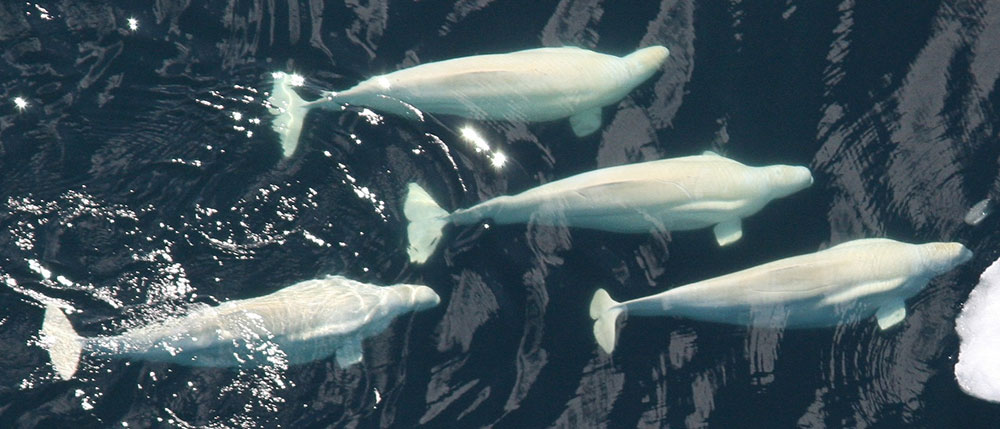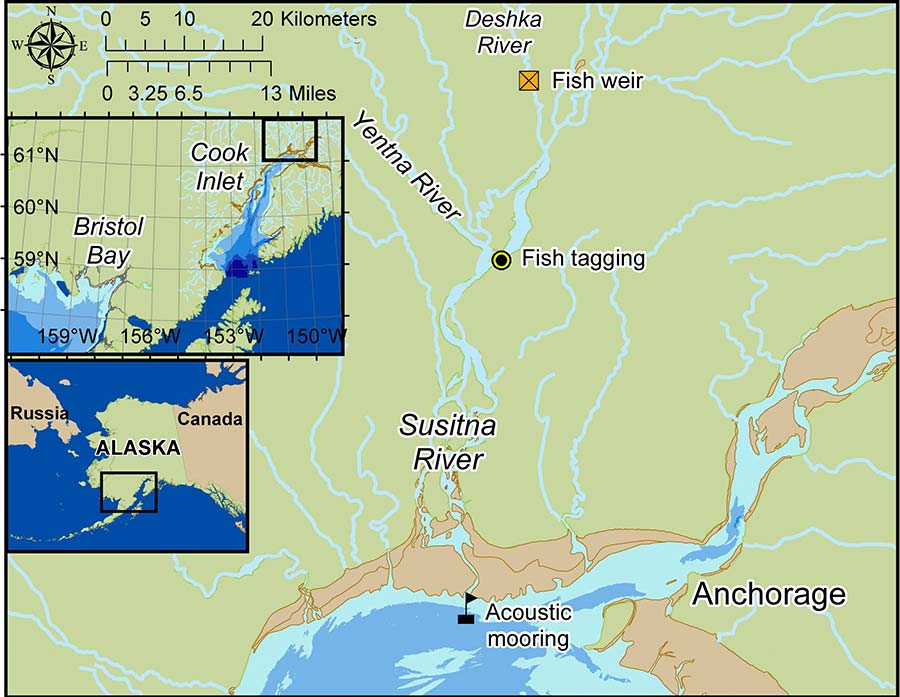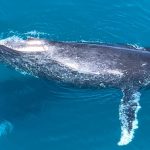← Back
Argos helps in detecting beluga whale feeding sounds

Argos can help in understanding an endangered species behavior, by providing with locations but also collecting other data measured by a wide range of possible sensors. Some populations of beluga whales in Alaska were studied combining Argos, sound recorders and stomach temperature transmitters to pinpoint their echolocation sounds when feeding.
Beluga whales (Delphinapterus leucas) are cetaceans found in the Arctic and sub-Arctic. The bump on their head hosts an echolocation organ, enabling them to find their way in turbid waters under the sea ice, in particular. The level of threat on the populations depends on the area. Some populations are quite healthy, while others are “critically endangered”, such as the one around Cook Inlet, Alaska.
A beluga whale endangered population
Cook Inlet is home to a declining population of less than 300 beluga whales, while Bristol Bay, also in Alaska, has a quite healthy population of 2000 to 3000 animals, with similar environmental conditions in both areas. The conservation efforts do not seem fruitful at Cook Inlet, so understanding why is important to act on these factors so as not to see this population become extinct.

Eight beluga whale individuals from Bristol Bay were equipped in August 2014 and May 2016 with a set of tags: an archival tag recording stereo sound, whale motion via tri-axial accelerometers and magnetometers, and depth, an Argos satellite tag to collect and retrieve time-depth and stomach temperature data and provide with the location, and a stomach temperature transmitter. The aim was to explore the acoustic behavior of Bristol Bay beluga whales when they are feeding and socializing, to distinguish the characteristics of the emitting echolocation “buzzes” during both behavioral states.
The study considers that Bristol Bay beluga whales are good surrogate for Cook Inlet ones, which cannot be disturbed with tagging operations so as not to jeopardize this endangered population.
Pinpointing the beluga whales’ prey detection echolocation sounds
The data collection was quite difficult for a number of reasons. In particular different noises (splashes, hydrophones in the air, or other belugas’ sounds) mixed with the instrumented beluga whales’ own sounds, masking them in part. Few data were retrieved with echolocation buzzes, body movement, feeding clues (either drop in the temperature of the stomach, or crunching sounds recorded) and locations together, but enough so that some conclusions could be drawn. The echolocation buzzes directed at prey, the specific sounds marking beluga whale feeding, were thus characterized by their inter-click intervals at the end of the sound sequence.
Once this characterized, this was applied to the Cook Inlet beluga whale population, and cross-examined with timing of spawning runs by different species of fish (eulachon (Thaleichthys pacificus), Chinook (Oncorhynchus tshawytscha), pink (Oncorhynchus gorbuscha), and coho (Oncorhynchus kisutch) salmon). A clear increase of feeding occurrence was noticed at the peak of the Chinook and pink salmon runs at the mouth of the Susitna River.
The method is promising and could be refined with more data, and applied to other populations of beluga whales so as to understand their feeding patterns and protect them at the right times and places.
Reference and links
- Castellote M, Mooney A, Andrews R, Deruiter S, Lee W-J, Ferguson M, et al. (2021) Beluga whale (Delphinapterus leucas) acoustic foraging behavior and applications for long term monitoring. PLoS ONE 16(11): e0260485. https://doi.org/10.1371/journal.pone.0260485
- Beluga Whale Sounds Aid Scientific Understanding of When Whales are Hunting Prey (Noaa Fisheries news, with example buzz sounds)
Main Photo: A pod of beluga whales in the Pacific (Credit: NOAA/NMFS/National Marine Mammal Laboratory, NOAA Photolibrary)

